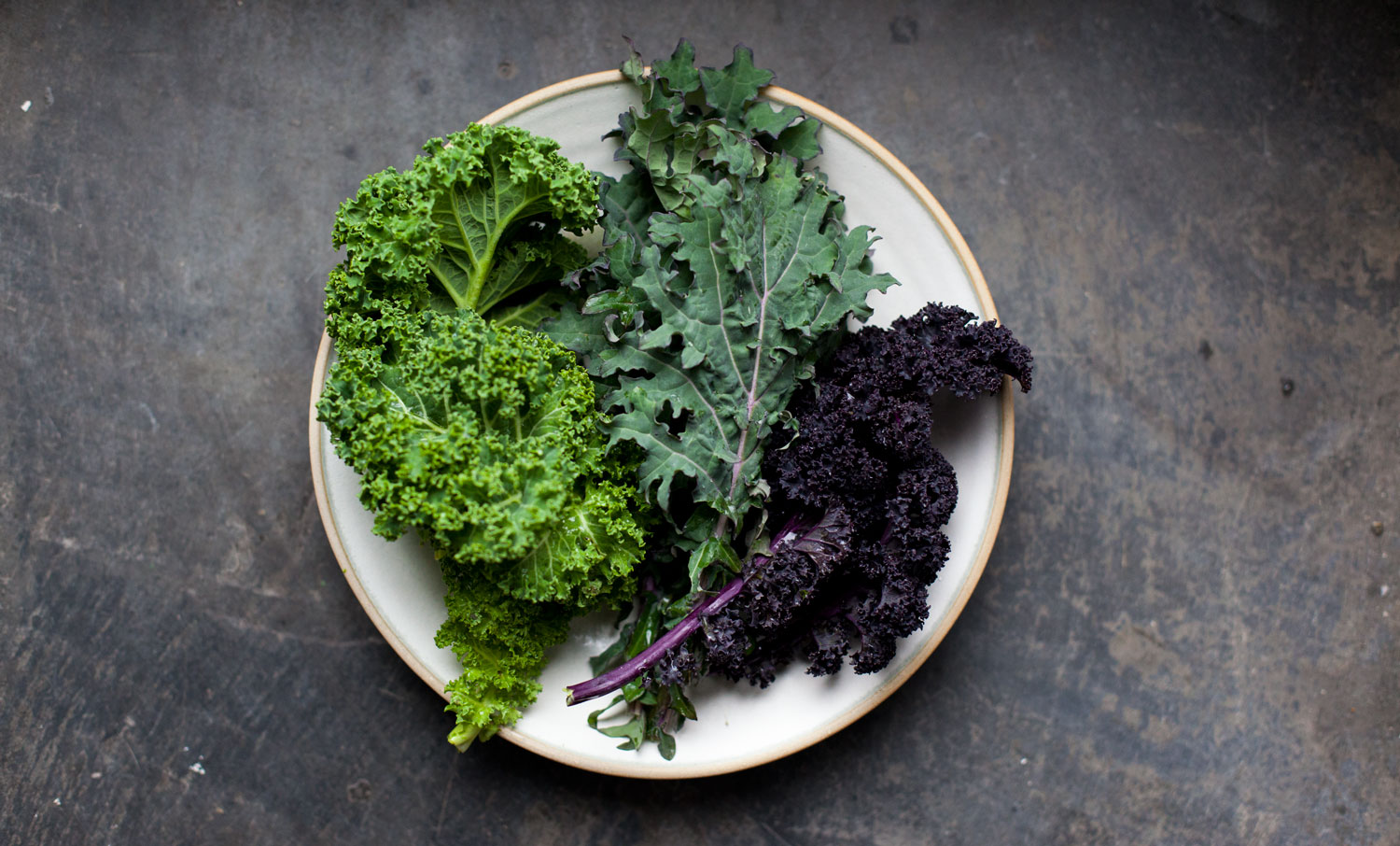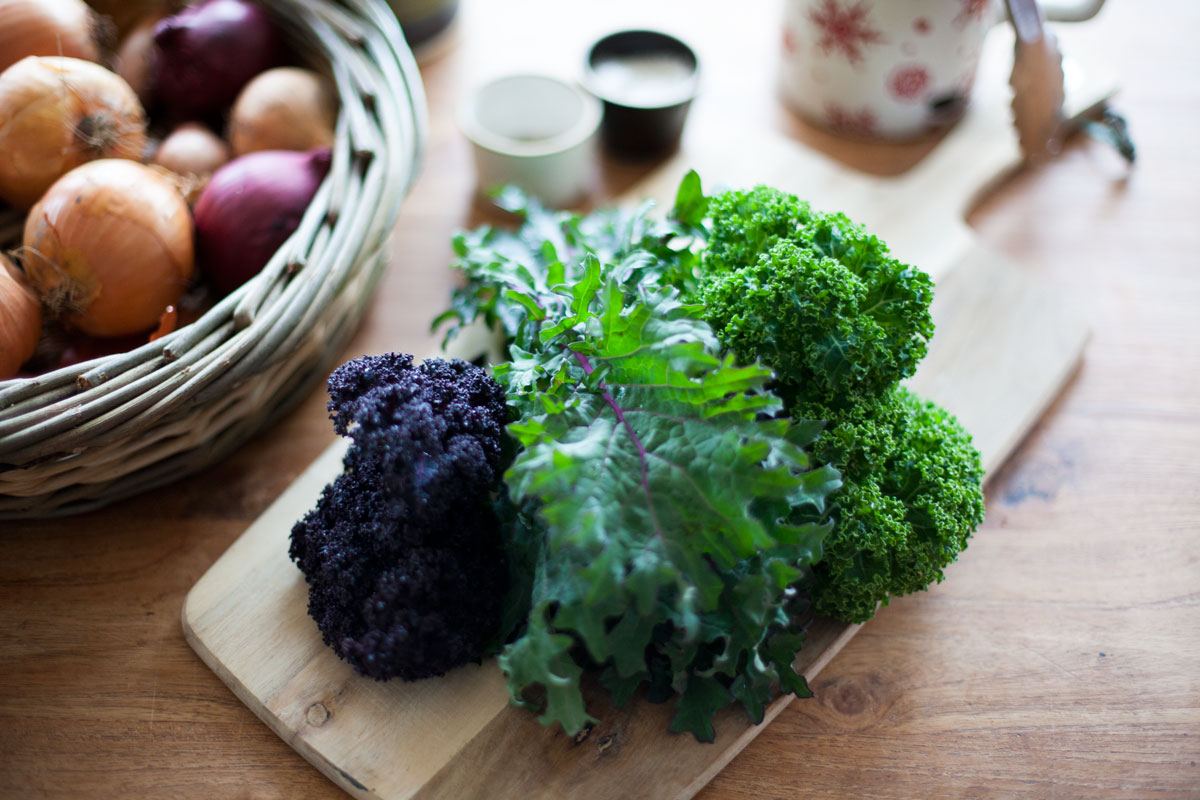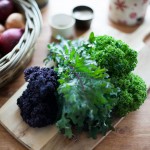We use cookies to make your experience better. To comply with the new e-Privacy directive, we need to ask for your consent to set the cookies. Learn more.
January Seasonal Table: Kale

Kale - Overview, Health benefits & Cooking with Kale
Kale is an amazing vegetable packed full of goodness and with some amazing health benefits, Kale is the king, of all the super healthy greens. It is one of the healthiest and most nutritious plant foods in existence - loaded with all sorts of beneficial compounds, some of which have powerful medicinal properties. It is also very easy to grow.
WHAT IS KALE
Kale is a popular garden vegetable, very low maintenance and a member of the cabbage family (Brassica Oleracea). It is related to vegetables like cabbage, broccoli, cauliflower and brussels sprouts. There are many different types of kale. The leaves can be green or purple in colour, and have either a smooth or curly shape.
The most common types of kale are curly kale, which has green and curly leaves and a hard,
fibrous stem. Or red russian kale, that has dark green and serrated leaves with a purple fibrous stem and veins.
HEALTH BENEFITS OF KALE
1. Kale is very nutrient rich foods
A single cup of raw kale (about 67 grams or 2.4 ounces) contains:
- Vitamin A: 206% of the RDA (from beta-carotene).
- Vitamin K: 684% of the RDA.
- Vitamin C: 134% of the RDA.
- Vitamin B6: 9% of the RDA.
- Manganese: 26% of the RDA.
- Calcium: 9% of the RDA.
- Copper: 10% of the RDA.
- Potassium: 9% of the RDA.
- Magnesium: 6% of the RDA.
It also contains 3% or more of the RDA for Vitamin B1 (Thiamine), Vitamin B2 (Riboflavin), Vitamin B3 (Niacin), Iron and Phosphorus. Kale is also very low in calories.
Kale contains very little fat, but a large portion of the fat that is found in kale is the omega-3 fatty acid. Omega-3 fatty acids are considered essential fatty acids. They are necessary for human health, but the body can't make them. You have to get them through food.
2. Kale is loaded with powerful antioxidants
Like other leafy greens, Kale is very high in antioxidants. This includes beta-carotene, vitamin C, as well as various flavonoids and polyphenols. Antioxidants are substances that help counteract oxidative damage by free radicals in our body. Oxidative damage is believed to be among the leading drivers of aging and many diseases, including cancer. Antioxidant properties include cardio protective, blood pressure lowering, anti-inflammatory, anti-viral, anti-depressant and anti-cancer effects.
3. It is an excellent source of Vitamin C
Kale is actually among the world’s best sources of the Vitamin - a water-soluble vitamin/antioxidant that serves many vital functions in the body’s cells. A cup of raw kale contains even more vitamin C than a whole orange.
4. Kale can help lower LDL (bad) cholesterol, which may reduce the risk of heart disease
Kale increases HDL (the good) cholesterol levels in our body. The HDL cholesterol has many important functions in the body. One of them is being used to make bile acids, which are substances that help us digest fats. According to one study, steaming kale can dramatically increase the bile acid effect. Steamed kale is actually 43% as potent as cholestyramine, a LDL cholesterol lowering drug that functions in this way.
5. Kale is one of the world’s best sources of Vitamin K
Vitamin K is a very important nutrient. It is absolutely critical for blood clotting, and does this by “activating” certain proteins and giving them the ability to bind calcium.
6. Kale is a good source of certain minerals that most people don’t get enough of
Many important minerals are found in kale, of which are generally lacking in most of our modern diets. This includes calcium, potassium and magnesium.
7. Kale is high in Lutein and Zeaxanthin, powerful nutrients that protect the eyes
Kale is high in lutein and zeaxanthin, these nutrients that have been linked to drastically reduce the risk of macular degeneration and cataracts of the eyes.

Cooking with Kale
If you want to dramatically boost the amount of nutrients you take in, consider loading up on kale. Fortunately, adding kale to your diet is relatively simple. You can simply add it to your salads or use it in most meals. Some people find that kale is a bit crunchy or dry for their taste, if you find that it puts you off - try massaging the leaves between your thumbs and forefingers or between your palms until you feel them begin to soften, this can break down the fibres that make the leaves so tough!
Kale Chips
A popular snack is Kale Chips/Crisps; this tastes absolutely delicious and is a great alternative for any savoury/salty craving, these are a crunchy and super healthy snack. Simply wash the kale (lots of it as it will shrink when cooked), place it directly onto a backing tray, drizzle over a little extra virgin olive oil, add a pinch of salt and then bake in an oven until dry.
Add to stews & Soups
It can also be roughly chopped and added to any soup, stew, curry or just steamed as a side vegetable to any meal.
Smoothies
A lot of people also add kale to their smoothies in order to boost the nutritional value. When eaten raw (as in the case of most vegetables) it contains more nutrients.
Kale can be eaten raw and added as a green to any salad - especially Red Russian.
Some more Recipe ideas from around the web

